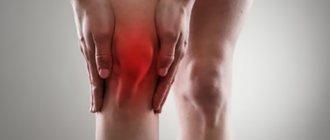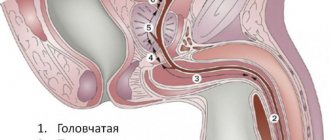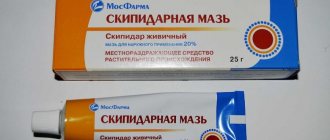March 30, 2021 Normally, urination should not cause any discomfort or pain. Otherwise, this indicates the presence of problems with the genitourinary organs. Common causes include diseases of an infectious, inflammatory and tumor nature. They may cause different types of pain:
- occurring at one time or another (before, at the beginning, during, at the end and after urination);
- have a cutting, piercing, aching or other nature;
- felt in the urethra, radiating to the lower back, lower abdomen and even legs;
- occur against the background of other symptoms (increased urge, urine output in drops or portions, urinary retention, incontinence, etc.).
Read more about why pain occurs when urinating and the role of early contact with a specialist in case of such a symptom.
Why does the urethra hurt?
Urethritis
Urethritis is a group of diseases, usually of an infectious nature. Less commonly, pathology develops against the background of allergies, toxic or radiation exposure. The main manifestations are itching, burning and pain when urinating, pathological discharge from the urethra. The clinical picture varies somewhat depending on the type of pathogen:
- Nonspecific urethritis.
In acute primary inflammation, the symptoms are moderate, the discharge is mucopurulent or purulent in nature. In patients with chronic urethritis, there may be no pain, minor burning and itching are noted. Secondary inflammation occurs against the background of general infections and is accompanied by mild pain during urination and scanty mucopurulent discharge. - Gonorrhea.
Signs appear 3-7 days after sexual contact with an infected partner or (less commonly) domestic infection. Acute urethritis manifests suddenly. It manifests itself as cutting, pain and burning in combination with profuse purulent grayish-yellow creamy discharge. When the process spreads to the posterior part of the canal in men, the body temperature rises to febrile levels. In the chronic form, the pain is tingling and occurs only at the beginning of urination. - Trichomoniasis and chlamydia.
For these variants, an erased, asymptomatic course is typical. Itching and burning predominate, pain is insignificant or absent. With trichomoniasis, the discharge is foamy, whitish, with chlamydia – yellowish, watery or mucopurulent. Patients with chlamydia may develop Reiter's syndrome. - Candidal urethritis.
It is also asymptomatic. Mild itching and slight burning are complemented by scant whitish discharge, sometimes by short-term, low-intensity painful sensations when urinating.
Nonspecific bacterial, less often specific inflammation occurs not only in adults, but also in young patients. Patients aged 2-4 years are most susceptible to pathology. Urethritis in children is manifested by pain and burning during the passage of urine, sometimes by dull nagging pain in the lower abdomen. Sudden painful urges and frequent urination, including at night, are possible.
Urethral stones
Men are more often affected. Secondary stones predominate, descending into the lumen of the urethra from the kidneys or bladder. Traumatization of the walls of an organ by a moving stone is accompanied by sudden intense sharp pain. Difficulty urinating, weakening and dispersion of the stream, and hematuria are observed. Complete obstruction is manifested by acute urinary retention. Men with posterior urethral stones complain of pain when sitting and walking.
Foreign bodies and injuries
Foreign objects in the urethra are more often found in children and young men. The first category introduces foreign bodies out of curiosity, the second - during masturbation. With small smooth objects, slight pain and discomfort are observed, which gradually decrease, but reappear with sexual arousal and urination.
Sharp and large objects cause sharp pain, strong urges, severe anxiety, hematuria, and if the urethra is obstructed, bloody discharge. Subsequently, urethritis often develops with pain and burning in the urethra, perineum and penis, general hyperthermia, and intoxication syndrome.
Men also predominate among injured victims. In half of the cases, pathology occurs with severe pelvic fractures. An incomplete rupture is characterized by acute pain, cramps, difficulty urinating, blood in the first portion of urine, hematomas of the scrotum and perineum. With complete ruptures, urine does not come out. Patients complain of sharp pain in the urethra and lower abdomen, and ineffective imperative urges.
Urethral pain
Neoplasms
Epithelial (condylomas, papillomas) and non-epithelial (fibromas, fibroids, angiomas, etc.) benign tumors are asymptomatic for a long time. Then itching and burning, discomfort and pain when urinating, changes in stream, contact bleeding and blood in the urine appear and slowly increase. When infected, the pain intensifies and cramps are noted. Dyspareunia is possible in women.
Polyps most often occur in people over 45 years of age. Clinical manifestations resemble urethritis or cystitis. Burning and painful sensations in the urethra appear when passing urine, during walking and sexual intercourse. A type of polyp is a caruncle, which develops in women during menopause. There is pain during and after urination, increased urge, spraying of the stream, and sometimes urethrorrhagia. The pathology is often complicated by prolonged severe cystitis and urethritis, severe dyspareunia.
Malignant tumors in men are characterized by difficulty urinating, the presence of induration, urethrorrhagia, and purulent discharge. Pain appears as the process spreads, radiates to the perineum, is combined with swelling of the penis and scrotum, and inguinal lymphadenitis. Women with urethral cancer experience pain and burning in the urethra, dyspareunia, urethrorrhagia, and urinary incontinence. When neoplasia moves to the vagina, pain occurs above the womb.
Chronic obstruction
Formed with valves and strictures of the urethra. Urethral valves most often occur in early childhood, and are less common in adult men who have undergone urological operations and manipulations. Patients are concerned about moderate pain when urinating, sluggishness of the stream, and night urges. Among patients with urethral strictures, there is a 2-4-fold predominance of men. Pain is an optional symptom and occurs against the background of weakening and splashing of the jet, a feeling of incomplete emptying of the detrusor.
Urethral diverticula
Pain in the urethra and inguinal-iliac region, combined with incontinence, pollakiuria, and dysuria, is observed with complicated diverticula. Typically difficult, painful urination in an intermittent stream with persistent urge and leakage of urine even after emptying the bladder. Pyuria and hematuria are possible. Large diverticula make sexual intercourse difficult due to swelling and pain in the vagina.
Prolapse of the urethral mucosa
Diagnosed in teenage girls and menopausal women. Patients complain of a feeling of a foreign body, followed by a burning sensation and pain. In the area of the external opening of the urethra, a painful bluish or pinkish dense formation is detected. Painful frequent urges are noted, and urinary incontinence is possible. With swelling of the mucous membrane, acute ischuria develops.
Other urological pathologies
Pain and pain in the urethra are accompanied by many bladder diseases:
- Cystitis:
acute, chronic, postcoital, interstitial. - Space-occupying formations:
urachal cysts, benign tumors, carcinomas. - Emergency conditions:
traumatic injuries and foreign bodies of the bladder, acute urinary retention, paracystitis. - Cystolithiasis.
Andrological diseases
Pain in the urethra is especially pronounced in acute prostatitis. It is associated with pain in the perineum and sacral area, sometimes radiating to the anus. Pain and increased frequency of urination are noted, urinary retention and difficulty defecating are possible. With chronic prostatitis, pain in the urethra, above the pubis, in the groin and perineum is aching, constant, and intensifies at the initial and final stages of urination.
Pain in the urethra with prostatitis in children appears during urination, complemented by constant nagging pain and discomfort in the perineum, lower abdomen, extending to the scrotum and rectum. Along with prostatitis, pain in the urethra sometimes accompanies prostate cancer and prostate adenoma, which develop mainly in old age. Pain occurs during ejaculation or urination. Combined with pain in the pelvis, perineum, above the pubis, dysuria and ischuria.
Women's diseases
80% of women with paraurethral cysts experience frequent urges, pain in the urethra, pain, burning, and mucous discharge from the urethra. An elastic formation can be felt in the meatus area. Another cause of pain, severe discomfort, burning and stinging when passing urine can be vestibulovaginal hypospadias.
Urethrocystoscopy
Causes of pain after urination
The main causes of pain after urination:
- Urolithiasis - stones have formed in the genitourinary system, which cause pain. With urolithiasis, there is a symptom of congestion - this is the cessation of urination and its resumption after a change in body position;
- Chlamydia is a sexually transmitted sexually transmitted disease;
- Ureaplasmosis is a sexually transmitted sexually transmitted disease. In addition to pain after urination, there is clear discharge and pain in the lower abdomen;
- Urethritis - inflammation of the urethra;
- Trichomoniasis is a disease that causes pain after urination;
- Gonorrhea - in addition to pain after urination, there is inflammation of the gonads and swelling of the genitals.
Diagnostics
Diagnostic measures are carried out by a urologist. If necessary, patients are referred to an andrologist, gynecologist or oncologist. The specialist collects complaints, ascertains the life history, establishes the circumstances of the appearance and nature of the painful sensations, the presence of other symptoms, and the dynamics of the development of the disease. Women are examined on a chair. For men, according to indications, digital examination of the rectum is prescribed. The diagnostic plan includes the following procedures:
- Ultrasonography.
Ultrasound of the urethra is informative for injuries, diverticula, foreign bodies, tumors, and stones. To obtain more complete data on the condition of the urinary tract and to exclude damage to the overlying sections, an ultrasound scan of the bladder is prescribed. Women undergo an ultrasound of the pelvic organs. Men undergo an ultrasound of the prostate. - X-ray examination.
Retrograde urethrography is recommended for traumatic injuries, diverticulitis, benign and malignant neoplasia, and stones. In some cases, descending urethrography, excretory urography, prostatography, cystography, and pelvic radiography are indicated. - Other visualization techniques.
Mainly used for malignant tumors. They are carried out to clarify the localization and extent of the pathological process and the involvement of neighboring organs. The list of diagnostic procedures may include MRI of the abdominal cavity, lymphadenography, etc. - Lab tests.
The most revealing tests are urine tests. Leukocyturia, hematuria, bacteriuria, and proteinuria can be detected in TAM. Based on the data from a three-glass sample, the level of damage is determined. The nature of the microflora is assessed by microscopy. To clarify the type of pathogen and its sensitivity to antibiotics, a microbiological study is carried out. For STIs, PCR and ELISA are prescribed. The type and degree of differentiation of neoplasia is determined during histological analysis.
Diet recommendations
If a man
experiences
pain at the end of urination
, at the very beginning or during the entire process - for the period of treatment you need to follow a diet. This is one of the conditions for effective recovery.
The patient should exclude smoked foods, pickles, spicy foods, any canned food, carbonated drinks from the menu, and also stop drinking strong tea and coffee. In addition, it is necessary to eliminate bad habits (smoking, drinking alcohol). This will reduce the negative impact on the kidneys and further strengthen the immune system during therapy.
In some cases, doctors include traditional medicine in their nutritional recommendations, which have a supportive effect.
Treatment
Conservative therapy
The list of therapeutic measures is determined by the characteristics of the pathological process:
- Urethritis.
For acute nonspecific and gonorrheal urethritis, antibiotics are prescribed; for chlamydia, antibacterial therapy is supplemented with corticosteroids; for trichomoniasis, antiprotozoal agents are used; for candidiasis, antimycotic agents are used. Chronic inflammation is an indication for complex therapy, which, along with the listed drugs, includes instillation of silver nitrate and collargol. - Injuries and foreign bodies.
Sprains and bruises of the urethra are subject to conservative treatment. Cold, rest, NSAIDs, hemostatic agents, tranquilizers, sedative medications, and prophylactic antibiotic therapy are recommended. Small foreign objects are sometimes successfully removed with urine flow using special techniques. - Prolapse of the mucous membrane.
Warm sitz baths are used to relieve swelling. In mild cases, catheterization of the bladder is performed for a period of 10-12 days. Manipulation allows not only to straighten the urethra, but also to fix the mucous membrane, preventing further prolapse. - Prostatitis.
Long-term antibiotic therapy is carried out; if the course persists, immunostimulants are used. Non-drug measures include prostate massage, electromagnetic vibrations, ultrasound, laser exposure. If there are contraindications to physiotherapy, medicinal microenemas are given. - Malignant tumors
. Chemotherapy, external beam or contact radiation therapy may be required.
Pain after urination in men
In men, pain after urination may occur due to:
- Prostatitis is inflammation of the prostate gland. This disease begins after bacteria enter the prostate from the urethra. Prostatitis appears against a background of weakened immunity, stress, and concomitant diseases of the genitourinary system. Symptoms: pain after urination, abdominal pain, pain during ejaculation, difficulty urinating, pain in the testicles;
- Phimosis is a disease during which the foreskin narrows. This disease is provoked by infection, injury, and failure to comply with personal hygiene rules. Symptoms: pain after urination, difficulty urinating, pain during ejaculation.
Causes of pain in women
- Inflammation of the vagina (vaginitis) or cervix (cervicitis). In addition to pain during urine excretion, these diseases are also characterized by the appearance of pathological discharge from the genital tract, itching and burning in them.
- Candidiasis. This is a lesion of the vaginal mucosa that occurs with the active growth of yeast fungi of the genus Candida. Pain and cramps in this pathology are accompanied by a cheesy discharge with a characteristic odor, as well as itching in the vagina and external genitalia.
To diagnose and treat these diseases, a woman should consult a gynecologist.
I would especially like to emphasize that most often the causes of pain when urinating are caused by pathologies of an inflammatory and infectious nature. This means that careful and competent hygiene plays a leading role in the prevention of such violations.
And just simple adherence to it will significantly reduce the risk of such diseases.
You can get the most detailed and reliable information about proper hygiene of the genital organs during a consultation with a doctor at SM-Clinic. To make an appointment, call: +7 (4912) 77-67-51.
Causes of cystitis
The causes of cystitis can also be a decrease in general immunity, chronic stress, the onset of sexual activity, narrowing of the urethra, hypothermia, stagnation of urine in the bladder (the habit of enduring until the last), unbalanced nutrition, hormonal disorders, pregnancy, childbirth, and surgery on the urinary system.
Another reason is taking medications. The causes of cystitis can also be a decrease in general immunity, chronic stress, the onset of sexual activity, narrowing of the urethra, hypothermia, stagnation of urine in the bladder (the habit of enduring until the last), unbalanced nutrition, hormonal disorders, pregnancy, childbirth, and surgery on the urinary system.
Also, inflammation in the bladder can cause the body to react to certain allergens. In women, cystitis occurs most often. This is due to the physiological characteristics of the female reproductive structure. The urethra is located close to the entrance to the vagina and the anus. Therefore, it is very important to constantly monitor the quality of intimate hygiene.








